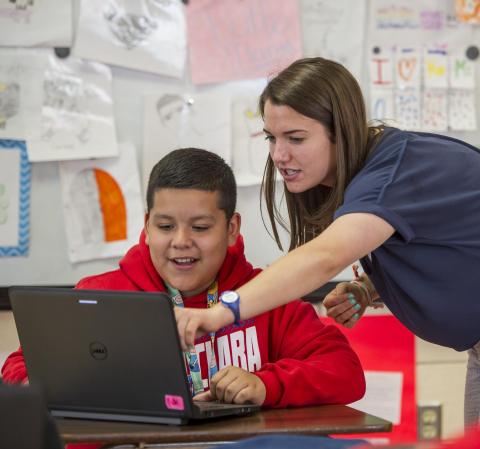7 Strengths of Super Readers Series // Hope

Hope: Thinking optimistically and believing that today's efforts will produce good things in the future for yourself and the world

The final of our seven strengths is hope. Our social-emotional arch of the strengths begins with affirming the self (Belonging and Curiosity), understanding and engaging others on a human level (Friendship and Kindness) and ultimately, reaching out to the world as an agent of change (Confidence, Courage, and Hope). Hope is that final frontier and our desired aim for every student because a hopeful child is one who believes that the future will be better than the present because she or he is in the world. Those who expect more powerful futures act powerfully in the present. And they read and write themselves into the change they want to reflect in the world.
- "Hope is a basic human need. When we lose our hope, we lose our humanity."
In his life's work with students who have faced extreme challenges, Shawn Ginwright has found that hope is the difference between students who are able to overcome overwhelming challenges and those who do not. Hope is what helps children to understand that they are powerful. Beyond becoming highly literate individuals, which certainly matters, hope is critical to helping students to change the world.
Strategies to Promote Hope in School
Compared to the other strengths, hope can be the most abstract or elusive to identify in texts. One way to use texts and teach about hope is to organize texts into four key areas of what we hope for: ourselves, our families, our communities, and our world.
We also encourage children to undertake social action projects in their classrooms based on the books they read. We encourage teachers and parents to ask students, "If you could change the world, what is one thing you would change?" We then recommend taking children through a ten-step process that includes:
1. Identify a Problem
2. Develop a Question
3. Design a study
4. Collect information
5. Analyze information
6. Make claims
7. Provide evidence
8. Create products
9. Disseminate products
10. Take Social Action

We have seen children across elementary, middle, and secondary classrooms develop powerful social action projects. Ernest and his colleagues have studied the impact these social action projects have on student's literacy skills, academic success, and attitudes toward their communities and the larger world. These students are also likely to read and write more as they connect these activities to improving the lives of others.
Strategies to Promote Hope at Home
Finally, we encourage parents and families to promote hope for children and we offer 10 routines that we hope you find helpful.
10 Family Routines to Promote Hope
1. Encourage your children to dream big and talk about the future
2. Discuss your future goals and hopes as a family
3. Create a Hope Wall for the family (i.e. Hope of the Week)
4. Set personal and family goals for reading and celebrate your successes
5. Listen to speeches, poems, and performances that embody hope
6. Be mindful of how we respond to children's ideas
7. Make a goal to embody a positive spirit in the home
8. Bring books into the home that focus on hope
9. Talk about resiliency and how to face adversity with optimism
10. Interview elders to learn about their hopes for the next generation

We want to thank you for taking this journey with us this week. We hope you are inspired to join the Super Reader movement! We are in schools and after school programs throughout the country thanks to LitWorld and Scholastic LitCamps, which served over 700,000 kids last summer. Pam Allyn and Ernest Morrell have also worked with thousands of classroom teachers who have implemented a strengths-based literature curriculum in their K-12 classrooms.
So, whether you are a teacher, a parent, a literacy specialist, a librarian, a principal, a superintendent, a volunteer at a church, synagogue, mosque, or parish, or a director of a community center, we thank you for your love of children and your commitment to inspiring literate lives!
Happy Reading,
Ernest and Jodene
